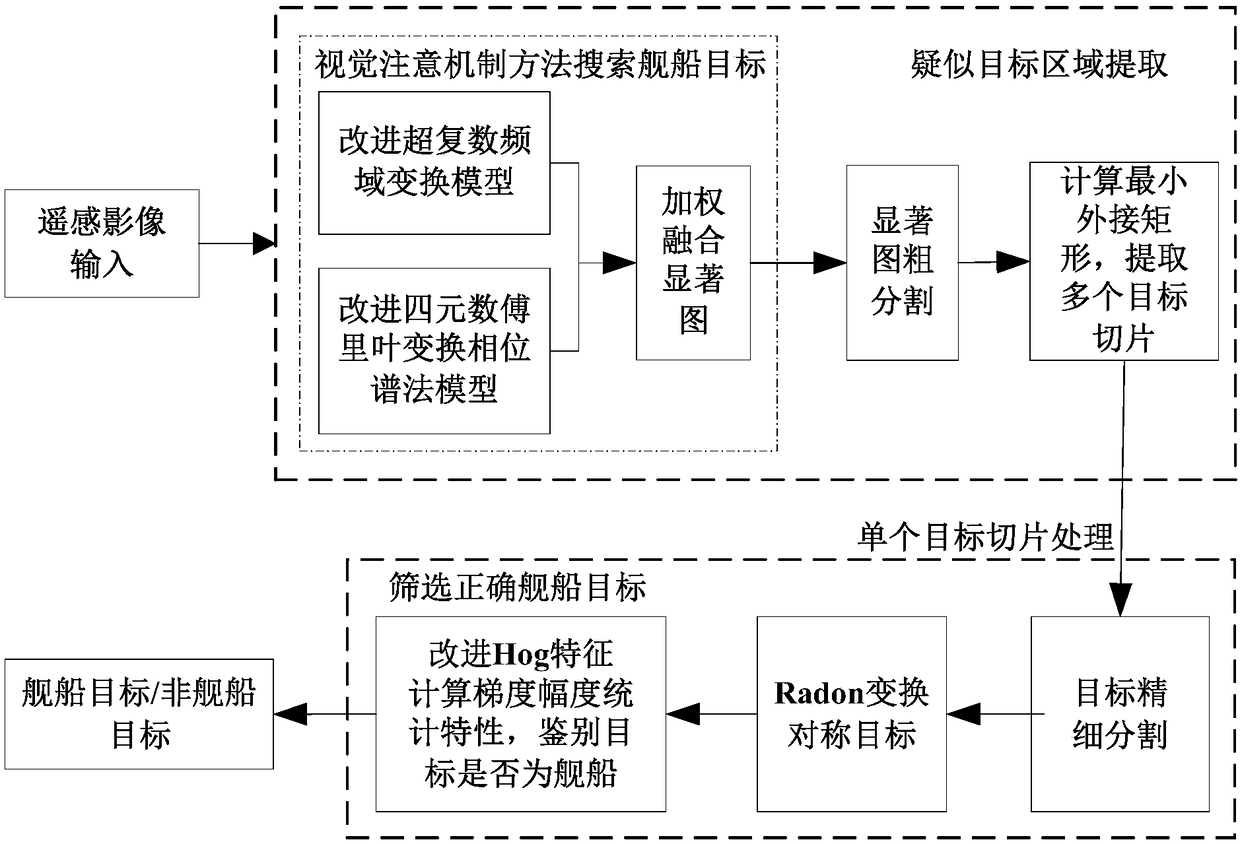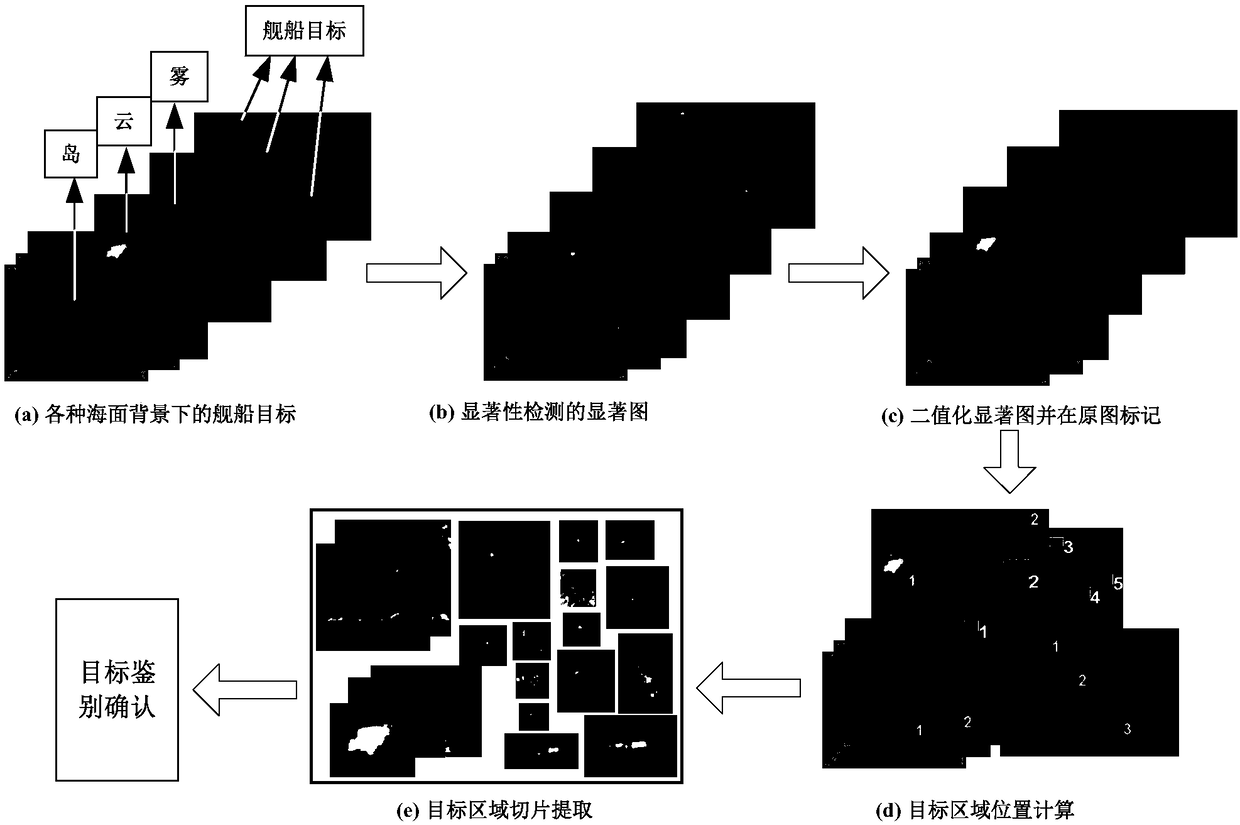A method for detection and extraction of ship targets on the sea surface in optical remote sensing images
An optical remote sensing image and target detection technology, applied in image analysis, image enhancement, image data processing, etc., can solve the problems of large fitting error of fractal model, weak surface ship target, weak background suppression ability, etc. And the effect of improving the degree of automation, suppressing the background interference of the sea surface, and improving the detection accuracy
- Summary
- Abstract
- Description
- Claims
- Application Information
AI Technical Summary
Problems solved by technology
Method used
Image
Examples
Embodiment Construction
[0044] The present invention will be described in detail below with reference to the accompanying drawings and examples.
[0045] The invention provides a method for detecting and extracting sea surface warship targets in optical remote sensing images, which introduces visual salience and gradient distribution features, respectively realizes unsupervised sea surface warship target area extraction and target confirmation, and the method has simple parameter setting and computational complexity Low, which can effectively reduce the false alarm rate, quickly and accurately extract ship targets of different sizes, and obtain their quantity and location information.
[0046] In this embodiment, the operating system is WINDOWS 2007, the processor is Intel i3-2120, the main frequency is 3.30GHz, the memory is 4.00GB, and the experimental software processing platform is Matlab 2010a, VS 2010. figure 1 It is a block diagram of the processing flow of the optical remote sensing sea surfa...
PUM
 Login to View More
Login to View More Abstract
Description
Claims
Application Information
 Login to View More
Login to View More - R&D
- Intellectual Property
- Life Sciences
- Materials
- Tech Scout
- Unparalleled Data Quality
- Higher Quality Content
- 60% Fewer Hallucinations
Browse by: Latest US Patents, China's latest patents, Technical Efficacy Thesaurus, Application Domain, Technology Topic, Popular Technical Reports.
© 2025 PatSnap. All rights reserved.Legal|Privacy policy|Modern Slavery Act Transparency Statement|Sitemap|About US| Contact US: help@patsnap.com



